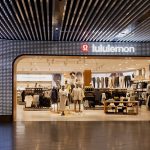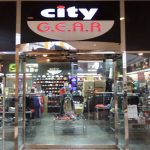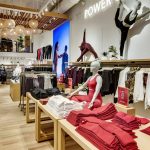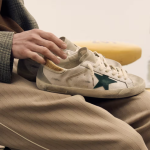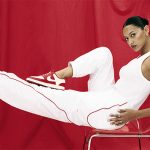Designer Brands, the parent of DSW, said athleisure and athletic styles again delivered double-digit growth due in part to ramped-up inventory investments over the last year. Weakness in dressier and formal styles due to the pandemic led to a 20.1 percent overall comp decline.
On a conference call with analysts, CEO Roger Rawlins said the company remains firmly committed to further expanding its athletic assortment, a historically under-penetrated category for DSW, to revive sales growth.
Rawlins also noted that in the fiscal year 2019, NPD reported that the overall market penetration of athleisure footwear had grown to 55 percent compared to DSW’s penetration at the time of 30 percent. Said Rawlins, “Given our under penetration in this key category, we began to undertake a critical pivot, even before the onset of the pandemic.”
By Fall 2020, athleisure represented 46 percent of sales with a positive 13 percent comp seen in its fourth quarter. More specifically, athletic comps jumped 19 percent in the fourth quarter of 2020 on top of the 4.5 percent growth in its fourth quarter of 2019.
More specifically, athletic comps jumped 19 percent in its fourth quarter of 2020 in addition to a 4.5 percent growth in its fourth quarter of 2019. Online, athletic saw an 86 percent growth in the quarter. Overall athletic styles represented 22 percent of U.S. sales penetration in its fourth quarter, up from 15 percent in the year-ago period.
Continued investments are planned, with athleisure expected to represent 50 percent of DSW’s assortment this spring. He added, “There is clearly more market share to capture here, and doing so will position us well as the market begins to recover.”

Evidence of progress in expanding across athleisure included NPD checkout data showing DSW’s customers’ wallet share in performance footwear increased to 16 percent in the fourth quarter, up one point from Q419. DSW’s growth rate in POS dollars for the sports leisure category grew 9.2 percent in the fourth quarter versus the year-ago period, better than the total measured market by 6.5 points and the shoe chain average by 1.4 points, according to NPD.
NPD found DSW’s growth rate for the performance category in POS dollars increased 16.1 percent in the fourth quarter, outperforming the total measured market by 21.6 percentage points and the shoe chain average by 21 percentage points.
Lastly, NPD showed DSW gained share across most athletic price segments, including sports leisure and performance, during the fourth quarter.
Other priorities to revive growth include prioritizing kids and focusing on the Top 50 brands in footwear. Kids footwear comparable sales were up 4 percent in the quarter, and the category grew to 8 percent of sales from 6 percent a year ago. In 4Q20, the Top 50 brands accounted for 71 percent of sales and posted a comp sales decline of 8 percent, significantly outperforming the overall 20 percent decline.
Designer Brands said boots outperformed expectations as colder weather led to increased demand, leading to fewer markdowns in the category than expected. Overall, seasonal footwear categories were down 24 percent in the quarter. Dress category revenues were down 61 percent.
“We are improving our digital capabilities to meet the customer where they are and have recently hired a chief digital officer to lead that charge,” said Rawlins. “We also have our Camuto team at the ready for when we see sustainable shifts in customer demand for dress and seasonal footwear while simultaneously actively protecting our new market share in athletics.”
For the quarter, net sales decreased 26.6 percent to $609.4 million. The comp decline of 20.1 percent compared to last year’s 0.7 percent increase.
By segment, U.S. Retail sales were $527.4 million, down 20.0 percent overall and 19.7 percent on a same-store basis. Canada Retail revenues were $42.2 million, down 26.8 percent overall and 19.7 percent on a comp basis. In its Brand Portfolio, which consists of the Camuto Group, sales were $52.2 million, down 48.5 percent year-over-year. The segment makes footwear and handbags under brands including Jessica Simpson, Lucky Brand, Vince Camuto, and Louise et Cie.
Gross margins eroded to 22.2 percent from 24.8 percent last year due to a significant reduction in customer traffic that reduced sales volume. Reported operating expenses were down 8.3 percent to $201.6 million but grew as a percent of sales to 33.1 percent from 26.5 percent, due to a significantly lower sales volume.
The reported net loss was $134.0 million, or $1.85, in the quarter, including charges of $1.32 primarily related to impairment and restructuring charges and the valuation allowance established against deferred tax assets. The adjusted net loss was $38.6 million, or 53 cents, against a loss of $7.6 million, or 11 cents, a year ago. Results exceeded Wall Street’s consensus estimate calling for a loss of 66 cents a share.
For the year, sales decreased 36.0 percent to $2.2 billion. Comparable sales fell 34.2 percent. The reported net loss was $488.7 million, or $6.77, after $2.87 a share in non-recurring charges. The adjusted loss was $281.7 million, or $3.90.
Rawlins said the fourth quarter continued to mark a sequential improvement over recent quarters that the company will look to build on. He said, “We have a significant amount of inventory open to buy and the capability to flex our business as customer preferences evolve, making us a dominant player with room to grow as the market recovers.”
Photos courtesy DSW


